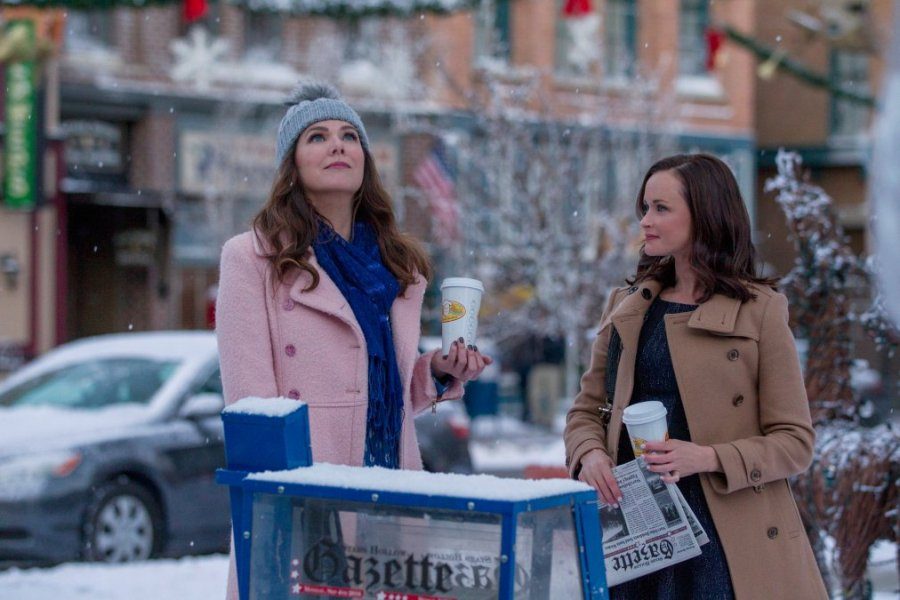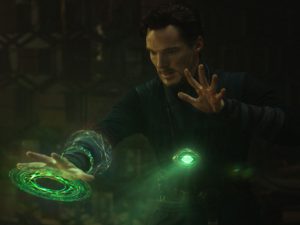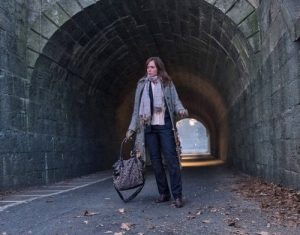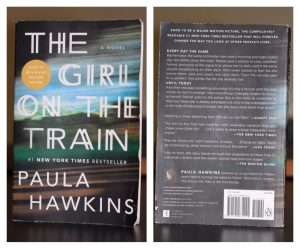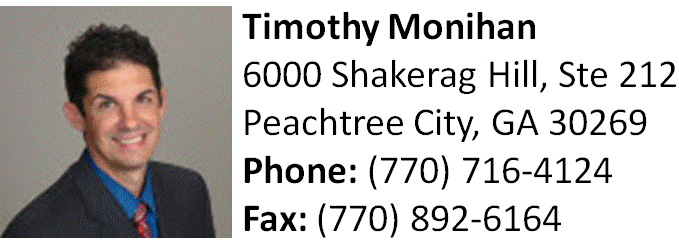Gilmore Girls revival (mostly) fulfills fans’ expectations
Famous mother-daughter duo Lorelai (Lauren Graham, left) and Rory (Alexis Bledel) reunite, coffee in hand, under a fresh snowfall. In the new series viewers saw Lorelai’s growth and accomplishments, but the same can’t be said for her daughter.
December 4, 2016
While some were crowding supermarkets hoping to find the best deal Black Friday this year, fans of a certain early 2000s mother-daughter dramedy were participating in something very different: binge-watching. The “Gilmore Girls” four-episode revival series, “A Year in the Life,” has just released, updating audiences on the lives of their favorite characters ten years after the show’s finale. The nostalgia-filled reboot has some sweet and clever moments, but falls short of crafting a story fans truly want to cherish.
The original “Gilmore Girls” ran from 2000 to 2006 and chronicled the lives of single mother Lorelai Gilmore (Lauren Graham) and her daughter Rory (Alexis Bledel) in the small Connecticut town of Stars Hollow. The show kicks off when Lorelai is forced to ask her parents for money to send her daughter to private school, which is part of the girls’ Ivy-league master plan. Lorelai’s parents, Hartford aristocrats Emily (Kelly Bishop) and Richard (Edward Herrmann), accept the offer on the condition that Lorelai and Rory attend a weekly meal, the “Friday Night Dinner.” From there, the show uses Lorelai’s baggage with her family and her romantic misadventures, coupled with young Rory’s school and love life to create something special.
But now, after ten years, the writers have reconvened to continue the series. Fans have certainly had many burning questions since the show wrapped, but now that the revival is out, do they like the answers?
For the most part, yes. Lorelai is finally in a long-term relationship with local diner-owner Luke Danes, the paramour of hers that most fans were rooting for in the original series. The two, even after nine years, never got married, which becomes a major plot point in the new series.
Rory takes up interest in the local paper, the Stars Hollow Gazette, and single-handedly keeps the paper from shutting down. It was a minor touch but introduced some fun characters and was an entertaining return to Rory’s roots. However, this turns out to be one of the only enjoyable developments in Rory’s character in the revival.
Paris Geller (Liza Weil), Rory’s high school friend, makes a return and settles into a career she seems to enjoy. Rory and Paris return to their private school Chilton, which offers ample opportunity for nostalgia, making fans feel as if they’re all the way back to season one.
Emily, Lorelai’s mother and Rory’s grandmother, battles grief after the death of her husband. Allowing Emily to emerge from this tragedy as her authentic self is without a doubt the most compelling storyline the revival brought to the table. Emily, despite numerous shortcomings, was loved in the original series because of her deadpan humor, hilarious obliviousness to the ways of life of the non-rich, and meddling ways that allow her to become a source of drama.
After Richard dies, the writers still keep up her antics (like accidentally ordering an enormous portrait of her departed spouse) but give her a refreshing moral upgrade. She’s able to keep a maid, the dedicated Berta, and allows her children to stay at her home – something the old Emily would never do. Emily finally takes charge and ceases worry about keeping up appearances.
Lorelai and Emily reconnect after the death of Richard, even if it takes a few screaming matches to get there. The ongoing feud between them seems to have been newly resolved in a way that it couldn’t have been before. In the original series, both women held firmly to their stubbornness, but over the past ten years, the two have visibly grown. The audience is denied this same finality with regards to Lorelai and Rory. Lorelai and Emily are arguably the true mother-daughter duo of the revival.
The reintroduction of most other characters goes smoothly. Resident weirdo Kirk Gleason (Sean Gunn) provides for some comedic relief, and most of his scenes are actually funny, unlike other areas of the revival that missed the mark. His startup company “Ooober,” a play on Uber, in which he picks his friends up in his rickety old car, was one of the few recent pop culture references included that wasn’t an utter cringefest, unlike the uncomfortable, forced “Hamilton” nods when the town puts on a musical. Kirk even has his own tear-inducing moment near the end when he finally manages to do something right.
Despite the absence (until the last episode) of Lorelai’s best friend, the lovable chef Sookie (Melissa McCarthy) with whom she co-owns an inn, another character from “the Dragonfly” sticks around. Michel Gerard (Yanic Truesdale), who is famous for his role as the grumpy Frenchman at the front desk, is featured prominently throughout the series.
With Sookie not around, there is some coworker bonding between Lorelai and Michel that was missed out on in the original series. They have to find a way to compromise Michel’s high-end aspirations for the inn and Lorelai’s inability to expand. It is revealed that Michel has a husband, which is a heart-warming touch, especially considering the show’s not-so-good history when it comes turning homophobia into a punchline.
There was some awkwardness at first (namely the first scene, in which the show writers try too hard to show off Lorelai and Rory’s fast-talking ways), but the show quickly delved back into its mile-a-minute, witty, dialogue that fans know and love. The show gets a revamped cinematography, bringing back some of the stylistically interesting shots of the first seasons that fans were deprived of later on in the original series. The characters have grown, and we see positive change among them, with the notable exception of Rory.
Lorelai’s now 32 year old daughter has seen some success in her journalism career, writing for publications like Slate, the Atlantic, and the New Yorker, but she’s been hitting roadblocks as of late. Rory’s struggles with work are what really drive not only her arc, but they unfortunately misrepresent her character.
The plus side is the strong sense of realism in Rory’s frustration, which is a breath of fresh air considering her seemingly perfect “best of both worlds” upbringing, if you ignore the bit about her absent father. She was able to have the down-to-earth home life with Lorelai, but the uptown benefits of her grandparents, considering that without their financial support, her path to Yale would’ve been much more difficult.
The downside is that this isn’t anything novel but rather an old trick. We saw it when she was rejected from a fellowship with the New York Times and even back in high school after she got a D on her first private school English paper. Even if this level of drifting might be an interesting commentary on post-college life and relatable to audiences, the optimistic end of the original series and Rory’s characteristic determination don’t, in any universe, culminate in this.
Aside from her career, other aspects of Rory’s arc are badly handled, particularly romance. In this department, Rory still feels like a college student, acting insensitively and immaturely. It’s as if the show picked up right where it left off. Morally, one might even detect a regression in Rory’s character. It’s not merely that the way she treats others is negative, but it’s not narratively interesting. Fans want to see Rory tackling new problems, but instead we see a poor rehashing of old plotlines and boyfriends.
Besides Rory’s treatment, some scenes, notably in the last couple of episodes, attempt escapism but drag on for way too long, creating something boring and uncomfortable. Although some work out alright, the “recent” pop culture references just don’t cut it. Constant pop culture references in the old series weren’t necessarily about things that were going on in the early 2000’s but instead callbacks to Lorelai’s childhood in the 70’s and 80’s. It’s understandable if the series is meant to be set ten years later – after all, everyday conversations require some updating, but please, at least make them funny.
Regardless of the negatives, the revival has been mostly successful in seamlessly recapturing the essence of the original. Fans’ favorite characters in their favorite small town are back at it and charming as ever, and in that regard, it nails the nostalgia factor, unlike the attempts at trendiness. Characters Emily and Lorelai achieve great personal growth, but fans of Rory are denied this same sense of finality. Considering the shocking last four words of the revival, one might wonder, “Can this really be it?”


